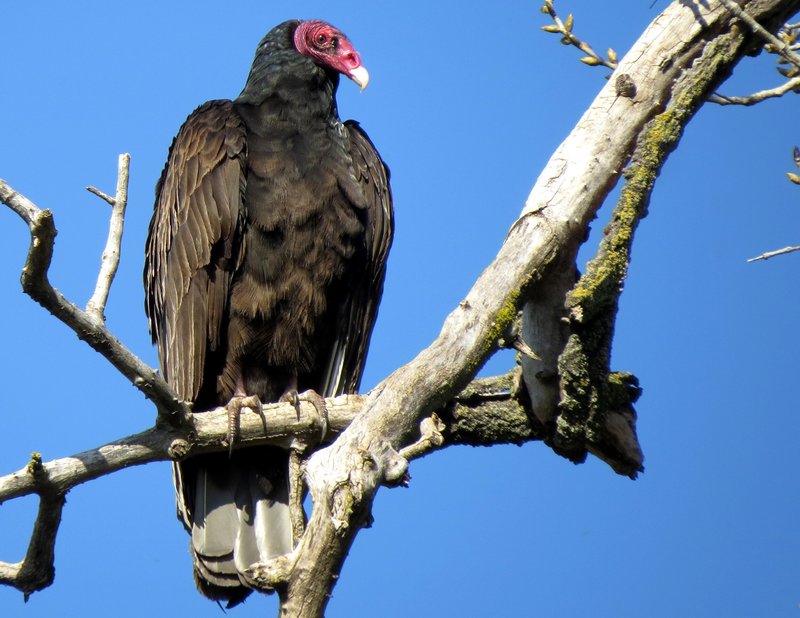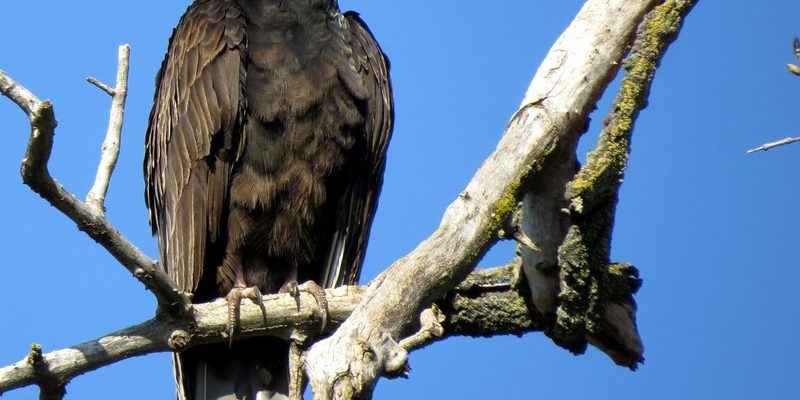
Imagine sipping coffee and watching these birds soar effortlessly overhead, riding thermals high in the sky. They seem almost carefree, but behind their serene gliding is a story of remarkable adaptation. Turkey vultures have evolved to thrive where many other creatures would struggle. Their unique traits and behaviors allow them to find food, endure harsh weather, and even cohabitate with predators without much fuss. Let’s dive into how they pull it all off.
What Makes Turkey Vultures Unique?
Turkey vultures (Cathartes aura) are part of the scavenger family, which means they feast mainly on dead animals. This approach to food is a significant advantage when resources are scarce. Equipped with an extraordinary sense of smell, much like a dog, they can detect rotting flesh from miles away. Unlike other birds of prey that rely heavily on sight, turkey vultures can smell the gases produced by decomposing animals, which leads them right to dinner.
One of their standout features is their **bald head and neck**, which might seem odd at first. But this design serves a purpose: it helps them stay clean while feeding. Vultures often dive into carcasses where bacteria and microbes thrive. A feathered head would trap dirt and germs, but the bare skin allows for easier cleaning. Honestly, it’s a brilliant adaptation that helps keep them healthy.
Additionally, they have long, broad wings that allow them to glide effortlessly over large distances. This means they can travel far in search of food without expending much energy. Imagine cruising in a convertible on a sunny day—why not embrace the scenery when making the journey as easy as possible?
Flight Patterns and Thermoregulation
You might be wondering how turkey vultures manage to fly so gracefully for hours on end. Here’s the thing: they utilize a behavior called **thermal soaring**. This is when they catch warm air rising from the ground, allowing them to gain altitude with minimal effort. Think of it like riding an elevator instead of climbing stairs.
In harsh environments, especially during the sweltering summer months, these thermals become essential. Turkey vultures often wait for the heat of the day to rise, taking advantage of the upward drafts without using their wing muscles much. This method conserves energy, which is vital when food might not be easy to come by.
Moreover, they have a unique ability to regulate their body temperature. While they perform their soaring acts, they can spread their wings to cool off or tuck them in during colder weather. This flexibility not only keeps them comfortable but also ready to hunt for food or escape from threats.
Feeding Habits and Nutritional Adaptations
Turkey vultures are incredible recyclers of nature, playing a critical role in their ecosystem. By consuming dead animals, they help prevent the spread of disease, acting as nature’s clean-up crew. This scavenging lifestyle makes them incredibly adaptable, as they can survive in various environments—from forests to deserts.
Unlike many other birds, turkey vultures have a highly acidic digestive system, which allows them to safely eat decaying carcasses. Their guts can handle pathogens that would be harmful to most other animals. This unique adaptation means they have little competition for food, as few creatures can eat the same things without risk.
If you’ve ever seen vultures circling overhead, they’re likely scouting for a meal. Once they locate a potential feast, their sharp beaks break through tough hides, allowing them to easily access the nutritious insides. It’s pretty fascinating how they can turn something that other animals would avoid into a gourmet meal.
Habitat and Nesting Preferences
Turkey vultures are quite the nomads. They prefer habitats that offer a mix of open land and forested areas, allowing them to soar while also having spots to roost and nest safely. You might find them in fields, near highways, or in mountainous regions, adapting to whatever environment they encounter.
When it comes to nesting, they often opt for locations that are hidden from view—like rocky ledges, hollow trees, or even abandoned buildings. This ensures that their eggs and young chicks remain safe from predators. You’ll rarely see them building traditional nests with twigs; instead, they lay their eggs directly on the ground or on rocky surfaces.
Interestingly, turkey vultures don’t typically exhibit a strong pair-bonding behavior. They can nest in loose colonies, which means several pairs might share nearby nesting sites. This communal living might provide some protection from threats, reinforcing their survival strategy in the wild.
Adaptations to Weather Challenges
Turkey vultures are incredibly resilient when it comes to surviving harsh weather conditions. Their feathers are specially designed to provide insulation from the cold, which is vital during chilly nights or winter months. The structure of their feathers traps air, keeping them warm without requiring excessive energy.
In contrast, during hot weather, they have a neat trick up their sleeves. They can regulate their body temperature through a behavior called **urohidrosis**. This is when they urinate on their legs to cool off, much like how humans sweat. It might sound strange, but this adaptation is effective in keeping their body temperature in check, especially when the sun is blazing.
During rainstorms, you might see them spread their wings wide and let the droplets hit them. This behavior helps to dry their feathers quickly once the rain stops, so they can get back to flying without heavy, waterlogged wings. It’s like shaking off a wet dog—quick and efficient.
The Role of Turkey Vultures in the Ecosystem
Turkey vultures play a pivotal role in maintaining the balance within their ecosystem. By consuming dead animals, they help control the spread of diseases that can arise from decomposing carcasses. You could say they’re nature’s cleanup crew, ensuring the environment remains healthy for other wildlife.
Their presence can also indicate the health of an ecosystem. A rise in turkey vulture populations often suggests a robust food supply and an overall healthy environment. In contrast, a decline in their numbers can signal an ecological imbalance, making their survival crucial for understanding environmental changes.
In addition, they serve as a food source for other animals. While adult turkey vultures aren’t typically preyed upon due to their size and behavior, their eggs and young can fall victim to larger birds or mammals. This connection reinforces the interdependence of species within ecosystems.
By understanding how turkey vultures survive in harsh environments, we gain insight into the delicate balance of nature, reminding us of the intricate web of life that thrives around us.
Challenges Facing Turkey Vultures Today
Despite their impressive adaptations, turkey vultures face several challenges in today’s world. Habitat loss due to urban development and agriculture can significantly impact their nesting sites and food sources. As people encroach on their habitats, these birds must adapt quickly to find new places to roost and nest.
Additionally, environmental changes, like climate change, can disrupt their food supply. Fluctuating weather patterns might affect the availability of carrion, forcing them to travel greater distances to find meals. This not only consumes more energy but also increases the risk of encounters with vehicles, leading to higher mortality rates.
Pollution and poisoning present another danger. When animals are poisoned, vultures that consume the carcasses can also fall victim to harmful substances. This not only affects individual birds but can also impact their populations in the long run.
In conclusion, while turkey vultures are incredibly skilled at surviving in harsh environments, they aren’t invincible. Protecting their habitats and ensuring a balanced ecosystem is essential for their continued survival. Understanding their unique lifestyle can inspire appreciation for these often-overlooked creatures and highlight the importance of preserving the delicate balance of nature.

